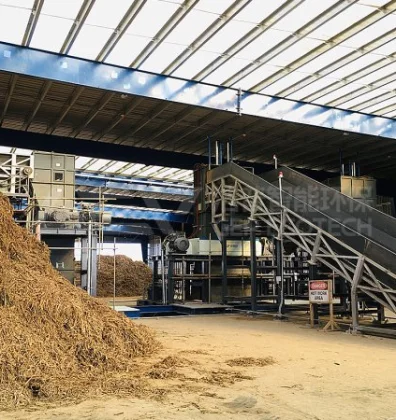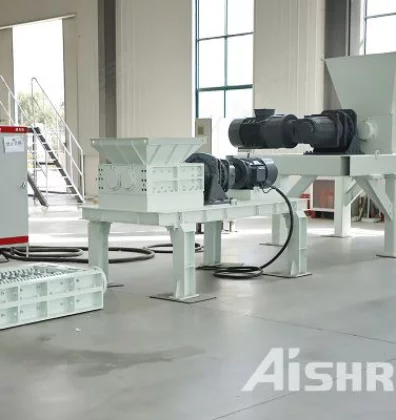RDF pelletizing machines are versatile systems capable of processing diverse waste streams, especially RDF (Refuse-Derived Fuel), into high-quality fuel pellets. However, the equipment selection and processing techniques vary significantly when handling biomass materials versus other waste streams (plastics, textiles, MSW). Understanding these differences is crucial for maximizing pellet quality, machine efficiency, and production output.
Processing Biomass Materials: Key Considerations
Biomass waste (agricultural residues, wood, food waste) has unique characteristics that require specialized handling.
Equipment Selection for Biomass
- High-Pressure Pellet Mills—Best for fibrous materials like straw, sawdust, and crop residues.
- Pre-Drying Systems—Essential for high-moisture biomass (>25%) to improve compaction.
- Heavy-Duty Extruders—Needed for tough materials like wood chips and nut shells.
Processing Requirements
✔ Particle Size Reduction—Biomass must be finely shredded (<5mm) for uniform pelletizing.
✔ Moisture Control—Ideal range: 10-15%(excess moisture causes poor binding).
✔ Binder Addition (if needed)—Lignin acts as a natural binder, but some materials may require additives.
Processing Non-Biomass Waste: Plastics, Textiles, MSW
Synthetic and mixed waste streams require different approaches due to varying melting points and binding properties.
Equipment Selection for Synthetic/Mixed Waste
- Cooling Systems—Handles plastic-rich waste with cooling mechanisms to prevent overheating.
- Heavy-Duty Shredders—Necessary for textiles, rubber, and composite materials.
- Magnetic Separators & Air Classifiers—Removes metals and inerts to protect the machine.
Processing Requirements
✔ Material Balancing—Optimal mix: 30-50% fibrous waste + 20-30% plasticsfor stable pellets.
✔ Temperature Control—Prevents plastic melting in the extruder (critical for film plastics).
✔ Impurity Removal—Non-combustibles (metals, glass) must be <5% to avoid machine damage.
Comparing Biomass vs. Non-Biomass Processing
Factor | Biomass Waste | Non-Biomass Waste (Plastics/MSW) |
Optimal Machine | High-pressure pellet mill | Twin-screw extruder with cooling |
Moisture Range | 10-15% | <20% (lower for plastics) |
Pre-Treatment | Shredding + drying | Sorting + shredding |
Binding Agent | Rarely needed (lignin helps) | Often required for mixed waste |
Choosing the Right RDF Pelletizing Machine
For Biomass-Dominant Waste
- Recommended Model: Heavy-duty pellet mill with drying system
- Key Features:
- Wear-resistant die & rollers
- Adjustable compression ratio
- Moisture control sensors
For Mixed/Synthetic Waste
- Recommended Model: Heavy-duty RDF pelletizing system with impurity removal
- Key Features:
- Temperature-regulated barrels
- Metal detection & ejection
- High-torque shredding pre-processor
Tailoring RDF Solutions for Maximum Efficiency to Optimize RDF Production
✔ For biomass, focus on moisture control and fine grinding.
✔ For synthetic waste, prioritize material balancing and temperature management.
✔ Always pre-sort and remove impurities to extend machine lifespan.
Partner with GEP ECOTECH for customized RDF pelletizing solutions that match your specific waste composition and production goals!



